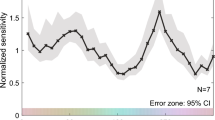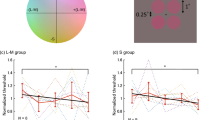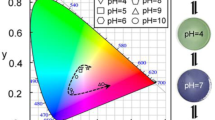Abstract
HOUSTOUN1 has pointed out that a three-colour theory, such as that of Young and Helmholtz, inevitably leads to mathematical contradictions. It is well known in addition that a theory in which there are only three primary sensitivities, such as red, green and blue, becomes unsatisfactory when the many different forms of defective colour vision are studied in detail. Piéron2 has recently attempted to meet these difficulties, but only by a complex and speculative hypothesis. Chapanis3 has published results of experiments on variations of the saturations of spectrum colours, which are inconsistent with a three-colour theory.
This is a preview of subscription content, access via your institution
Access options
Subscribe to this journal
Receive 51 print issues and online access
$199.00 per year
only $3.90 per issue
Buy this article
- Purchase on SpringerLink
- Instant access to full article PDF
Prices may be subject to local taxes which are calculated during checkout
Similar content being viewed by others
References
Houstoun, R. A., "Vision and Colour Vision", chapter 14 (1932).
Piéron, H., "La Sensation: Guide de la Vie", pp. 152ff (1945).
Chapanis, A., J. Exp. Psych., 34, 24ff (1944).
Burt, Cyril, Eug. Rev., 37, 154 (1946).
Author information
Authors and Affiliations
Rights and permissions
About this article
Cite this article
PICKFORD, R. Factorial Analysis of Colour Vision. Nature 157, 700 (1946). https://doi.org/10.1038/157700c0
Issue date:
DOI: https://doi.org/10.1038/157700c0
This article is cited by
-
Neural Mechanisms That Hide Individual Behavioral Differences: Evidence from Psychophysics and Neuroscience
Computational Brain & Behavior (2020)
-
Human Colour Vision and Granit's Theory
Nature (1948)



